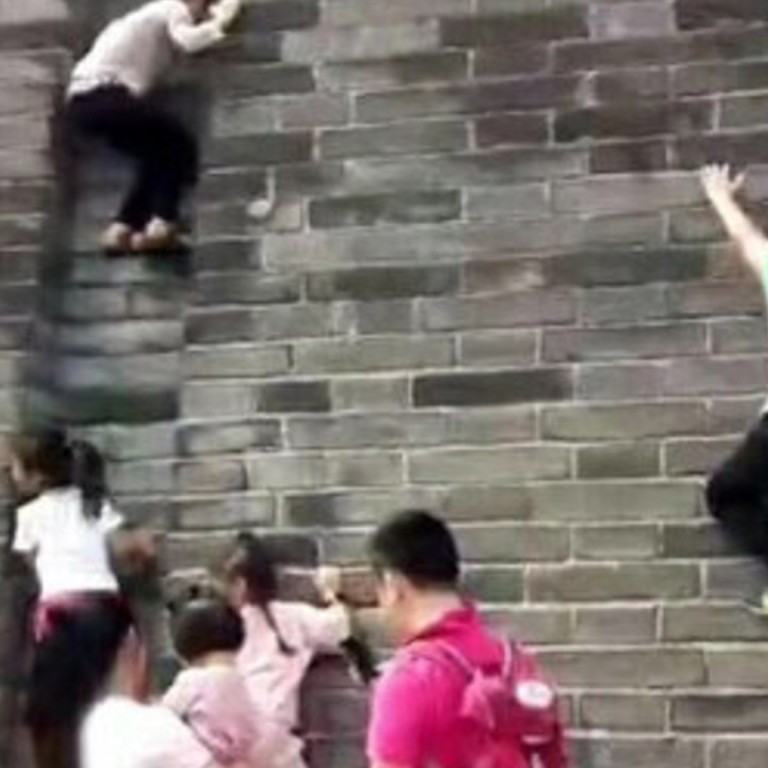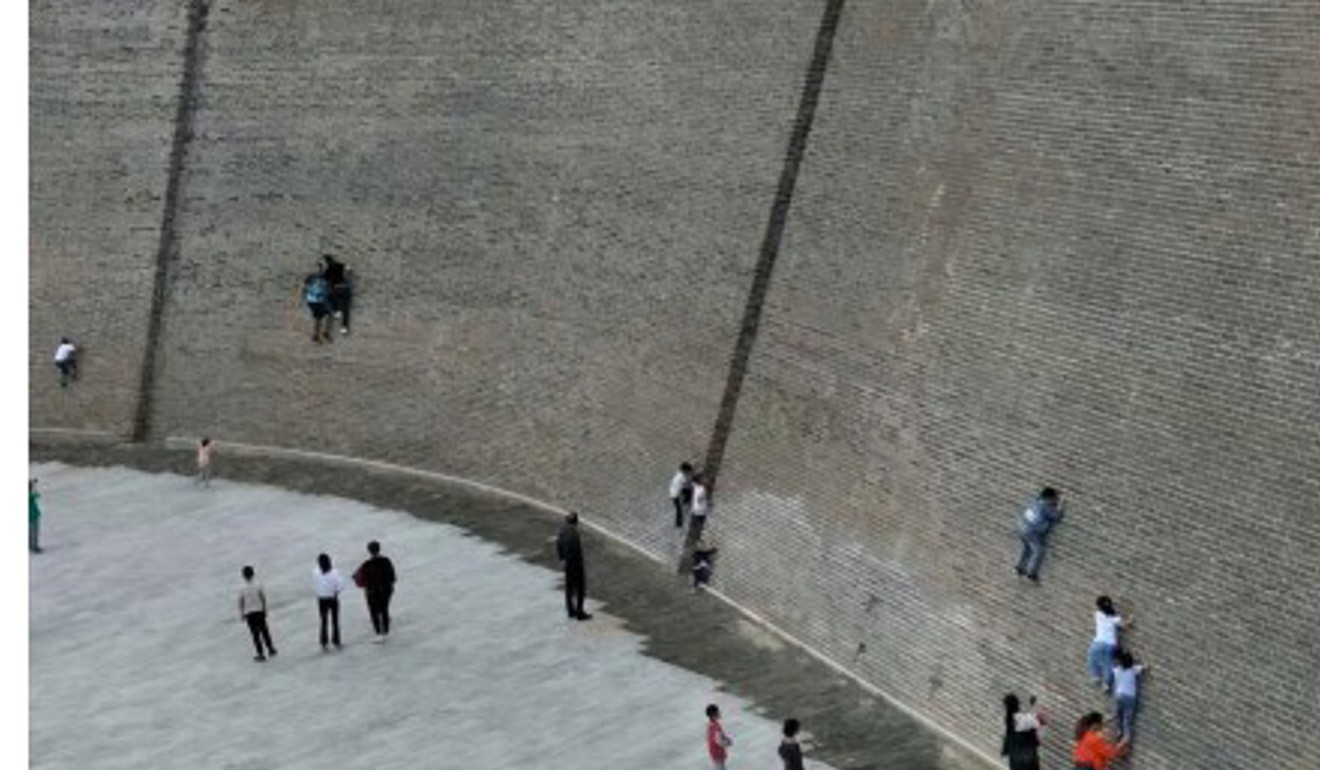
Ancient Chinese monument being used as climbing wall by visitors
Officials promise to take action after tourists risk damaging structure and put their own safety at risk
An ancient high stone wall in northern China risks being damaged by visitors who have turned it into a popular climbing spot.
Photos recently surfaced online showing several adult and child tourists climbing the 60-metre Zhengding city wall near Shijiazhuang, Hebei province, without any safety equipment or protective gear.
A county heritage preservation official told Beijing Youth Daily on Wednesday that tourists were already discouraged from climbing the wall, and better protection measures would be taken in future.
Climbing the wall is strictly forbidden, according to signs displayed nearby.
In photos circulated online, children can be seen climbing up the bare bricks while their parents watch below.
Adult climbers are also shown climbing up to a height of around 6 to 7 metres.
Web users warned of the safety risks, as well as expressing concerns it would damage the centuries-old monument.
“I don’t get why the parents are just standing there watching their kids climb so high, aren’t they afraid the child might fall off?” asked one commenter on microblogging site Weibo.
“They will only be scared off from doing it once someone dies from a fall,” posted another user.

Tourists started climbing the wall in larger numbers after it was renovated in July, according to the county heritage official.
No tourists have been fined yet, but recent measures taken to discourage climbing have been successful.
“As far as I know, no tourists have fallen down from climbing the wall, and now you rarely see them climbing,” he said.
Zhengding County’s Tourism Bureau confirmed to the paper that climbing the wall was not allowed, warning signs were in place and that tourists’ behaviour at the site was already being monitored by patrols.
The wall was originally built during the Eastern Jin dynasty (AD 265-420), replaced with stone bricks in the age of the Northern Zhou dynasty (557-581) and extended to 12km during the Ming dynasty (1386-1664).
It is currently under consideration to be added to the list of Unesco World Heritage sites.

